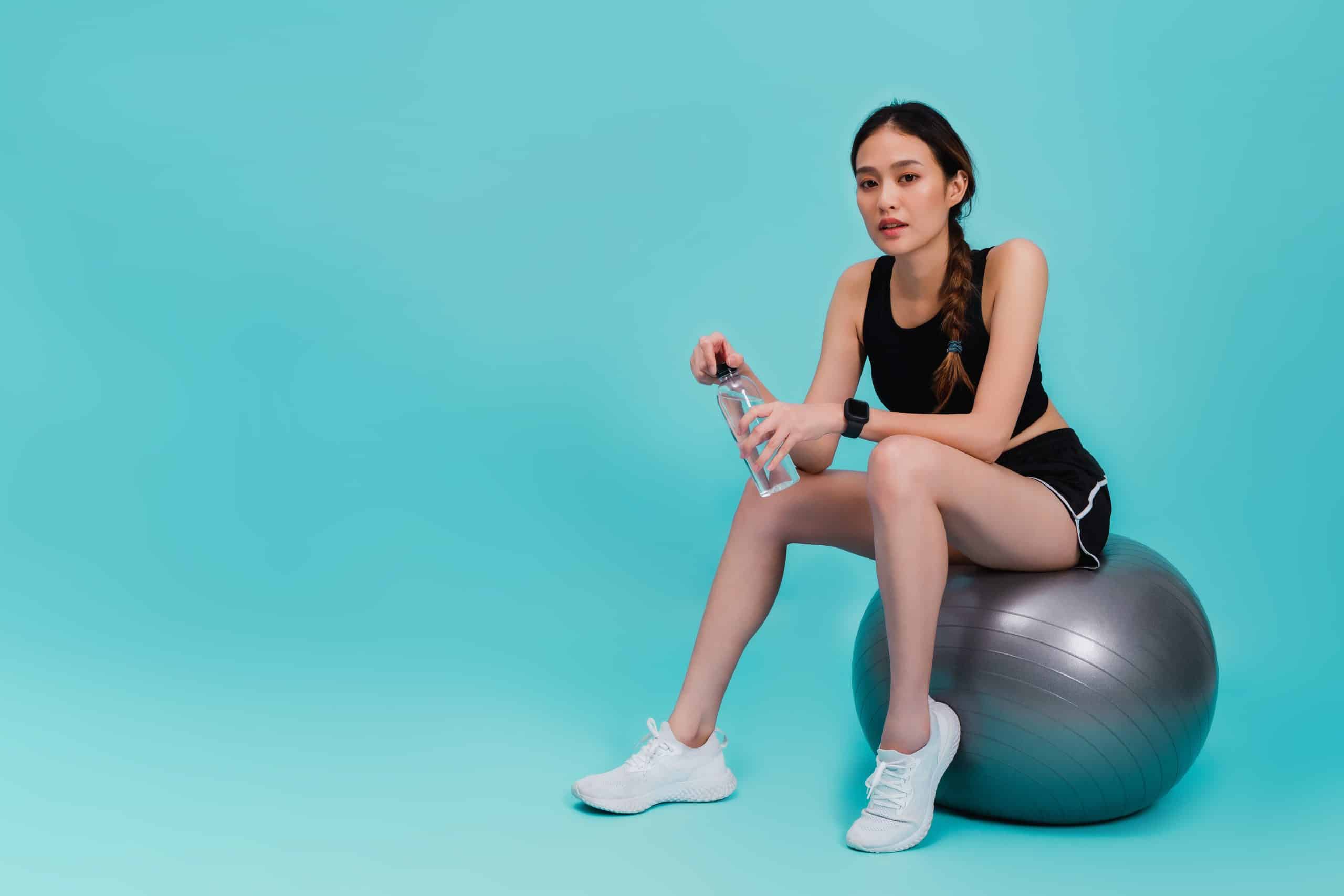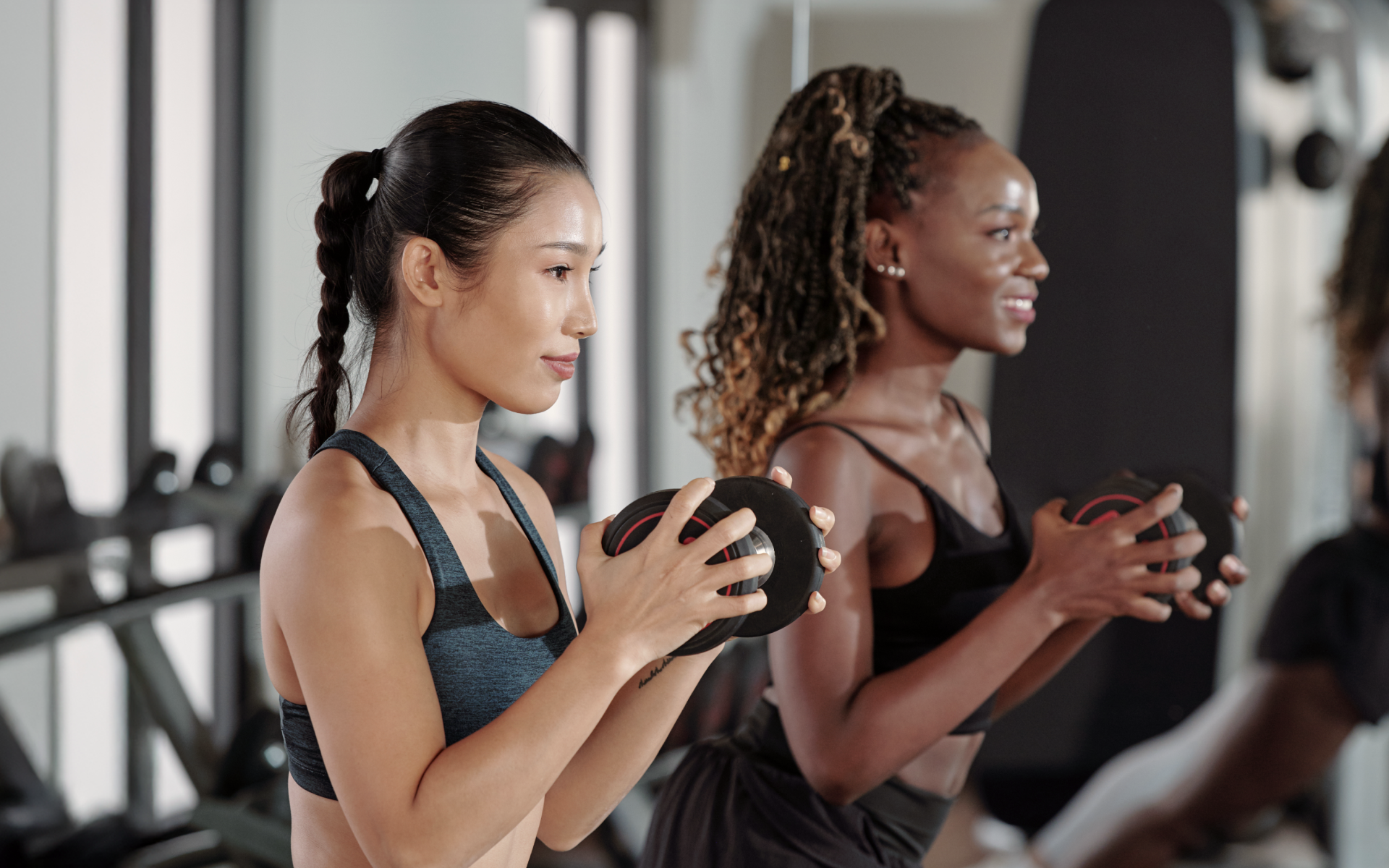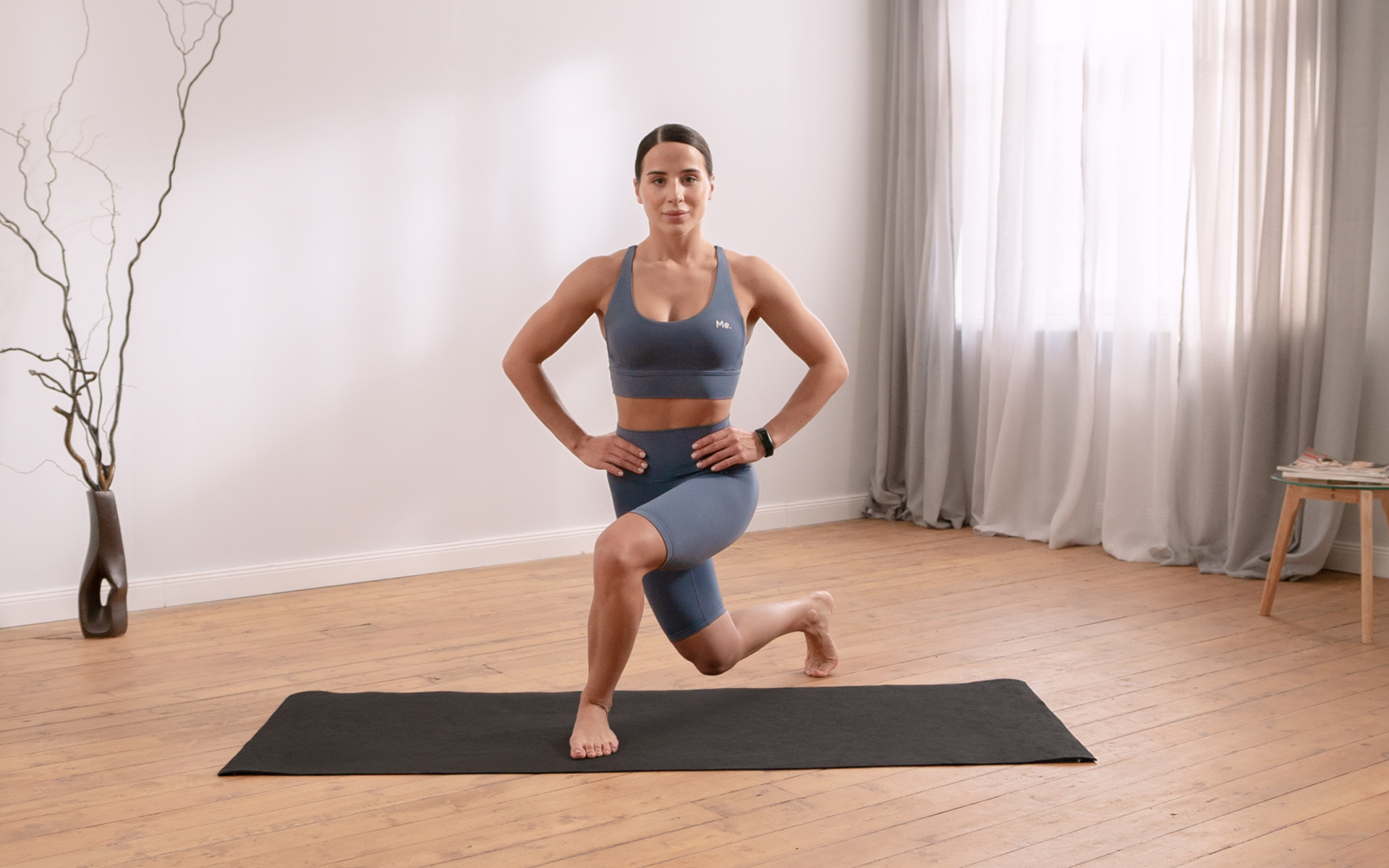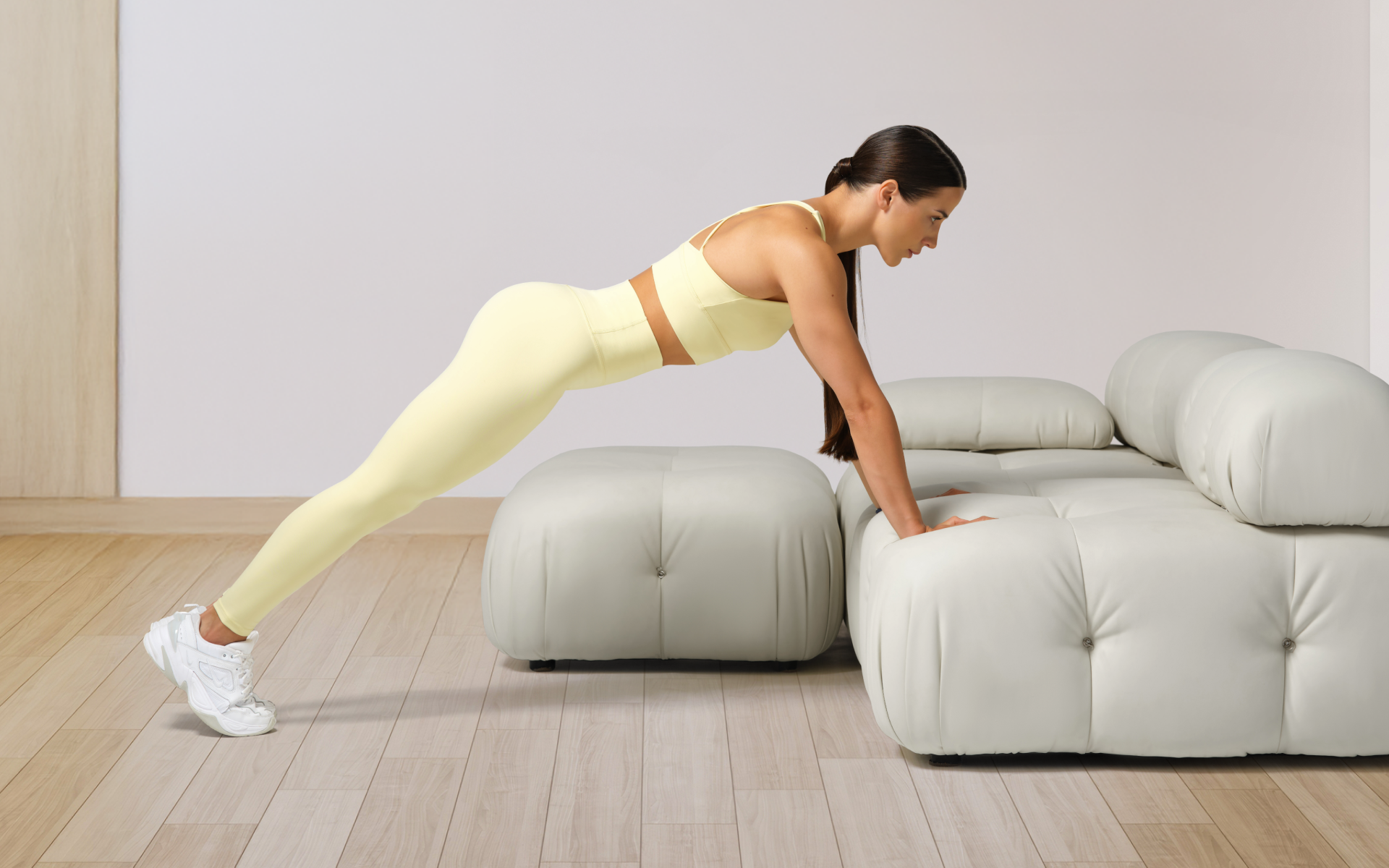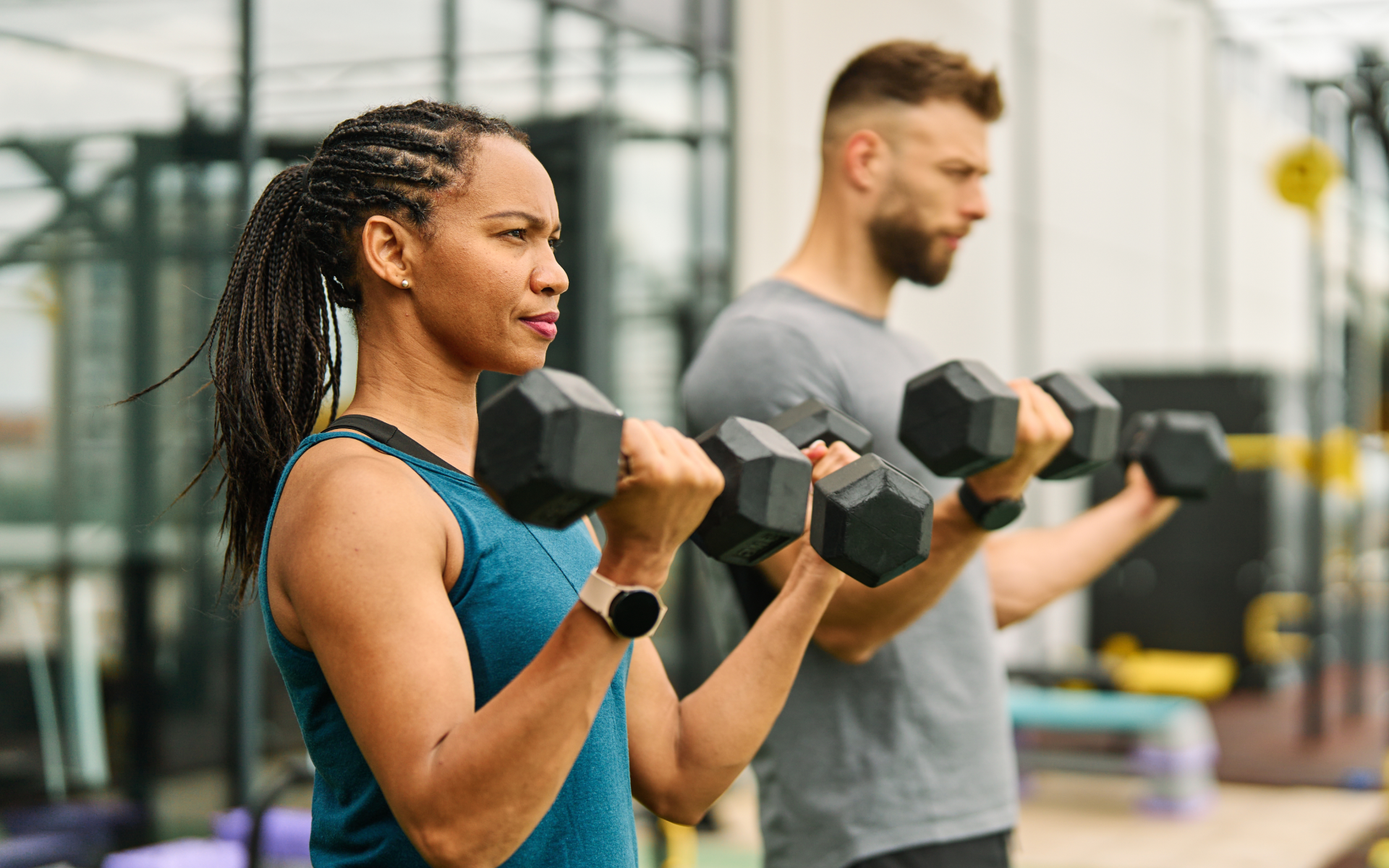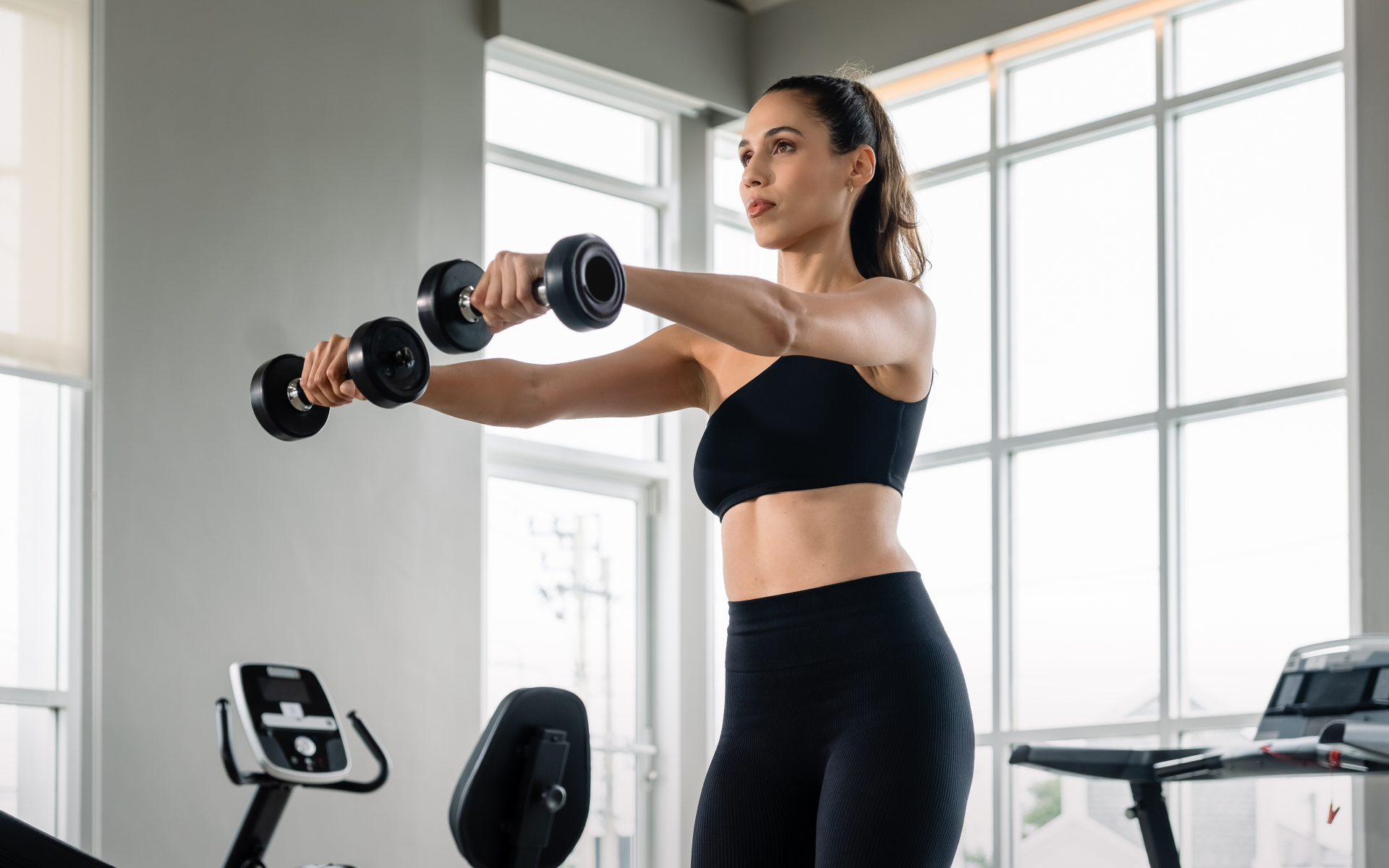Exercise balls have long been part of the fitness industry. However, despite them being around so long, they only seem to be used while doing yoga or simple, everyday core or balance exercises. While these balls are certainly good for this, that is not all they can be used for.
Exercise ball workouts come in all forms and can target multiple areas from the obvious core/abs, to your back, legs and even your arms. For those who cannot afford or simply do not have the time to hit the gym 3 to 5 times a week, doing small ball workouts at home can be an easy way to stay active, fit and improve your overall health.
If you are not sure where to start on this yoga ball exercises journey, then read on to learn more about the benefits of doing Pilates ball exercises, as well as identify which workouts you can do with this small yet mighty piece of equipment.
Do Exercise Ball Workouts Work?
Yes, they do.
For a while during the dreadful pandemic, yoga balls (also known as stability balls, Swiss balls, Pilates balls, or exercise balls) became all the rage as people switched out their normal work/office chairs for them. The reason was that advertisers claimed that sitting on such balls would help improve their posture and even offer them a core workout throughout the day.
Sales for stability balls were booming, only for this theory to be disproven with experts claiming that these statements had minimal scientific backing. Although exercise balls may not always work as regular chairs, they are fantastic when used as part of an active fitness routine.
Some benefits that you may expect to see while using them include:
Improved spinal health
The spine works to provide support, movement, protection, coordination and control of the body. Working this area of the body helps not only to improve your posture and balance, but also to increase lower back strength.
A stronger lower back also means less back pain. In a 16- week study done on patients with chronic lower back pain, researchers found that using an exercise ball for lower back stabilization exercises not only helped alleviate low back pain in the subjects but it also helped increase their bone mineral density (7).
Improved core strength
We cannot talk about yoga ball exercises benefits without mentioning core strength; this is afterall what these kinds of exercise balls are best known for.
A strong core not only helps improve your posture but it also helps reduce lower back pain and reduces instances of muscle injuries, both in everyday life activities, as well as in the gym, especially when lifting weights.
In a 12-week study published in 2010 in The Journal of Strength and Conditioning Research, researchers found that when sedentary women did core strength training exercises using a Swiss ball they were able to increase their trunk extensor (back)/flexor (abdominal) and lower limb extensor (quadriceps)/flexor (hamstring) muscular strength (3).
This also transferred into better abdominal, lower back and leg endurance, flexibility and dynamic balance than before (3).
Another study, looking at the strength changes produced in the core muscles when doing stability ball training, found that such workouts increased strength in both back and abdominal muscles. It should be noted, however, that the changes seemed more prominent in the female participants than the male subjects (5).
BetterMe app is a foolproof way to go from zero to a weight loss hero in a safe and sustainable way! What are you waiting for? Start transforming your body now!
Increased flexibility
If you’re reading this, you’re probably only considering using exercise ball workouts for weight loss. While, yes, small exercise balls can help with this goal, you should also consider using them as part of your warmup routine too.
Warming up during a workout is essential as it increases your flexibility which in turn helps improve your performance, decreases your risk of injury and even helps your joints move through their full range of motion – all factors that help with an effective workout session.
Research over the years has shown that using these balls before and even during the workout routine can increase your flexibility as well as your balance, strength, endurance, coordination, and much more (6, 4, 2).
Improved balance
Depending on how you use the ball during your exercise session, this could mean working out on an uneven surface. In the long term, this can help improve your balance.
Research done on different kinds of balls during exercise, shows that this small and seemingly unassuming piece of equipment can help improve both static and dynamic balance in young adults as well as seniors (6, 8).
Offers a variety of workouts
Unlike popular belief, these balls are not just good enough for a quick yoga ball ab workout. When used right, this small ball can be utilized in a number of workouts, ranging from mat Pilates to resistance training.
They are cheap
A small exercise ball is certainly much cheaper than a monthly gym membership, a fully equipped at home gym or even some free weights. Considering all the exercise ball workouts that you can perform with this simple equipment and a mat, they do seem like a sensible choice to anyone looking for a more affordable way to get/keep fit.
Can a Gym Ball Reduce Belly Fat?
Yes, using a gym ball, even a small one during your workout, can help reduce belly fat. This tool can be used in a variety of cardio as well as core workouts that not only help burn calories – leading to less fat in the belly area, but also lead to improved muscle tone, which can give you those sexy abs and also helps with more calorie burning throughout the day.
However, you must remember that only working out will not reduce belly fat. Weight loss resulting in a flatter stomach is mostly achieved first through a healthy calorie deficit diet with exercise being an addon (1).
Read more: How to Turn Exercise Motivation Into Real Actions?
What Exercises Can You Do With An Exercise Ball?
Clearly the exercise ball has numerous health and physical benefits, including the ability to help reduce belly fat. But which exercises can you really do with one? Here is a list of some workouts that you can do with a small workout ball which could lead to major physical changes.
Simple Exercise Ball Workouts For Beginners
If you are considering purchasing a small gym ball for either at home or personal gym use, here are some workouts that you can do:
Cardio Exercise Ball Workouts
If you are looking for exercise ball workouts for weight loss, improved core strength and better balance, these exercises are perfect.
-
Jumping Ball Slams
- Start with the ball on the ground right in front of you
- Step up to the ball with your feet shoulder-width apart, squat scooping up the ball and jump with the ball in your hand. Make sure that you lift the ball up and over your head as you jump.
- As you come down from the jump, slam the ball hard onto the ground. Hard enough that it actually bounces back into your arms
- This is one rep. Do 10 to 12 reps for one set. Try doing a total of 3 sets for the full workout.
-
Ball Burpees
- Start with the ball right at your feet. Bend over placing both palms on either side of the ball with the fingers facing downwards
- Jump your feet back thus getting into a plank position – Do not let your back arch down or let the knees touch the floor
- Push off with your toes and jump back up bringing the feet back to the ball and stand up. Do not lift the ball
- This is one rep. Do 8 to 10 reps for 1 set and a total of 3 sets for the full workout.
For a more advanced version of this move, lift the ball with you as you stand up.
-
Ball Mountain Climbers
You will need a stopwatch for this one. The one on your phone’s clock app is sufficient.
- Start by setting the timer to desired seconds/minutes
- Get on your knees and place both hands on the exercise ball with your fingers facing the floor
- Push your feet back thus lifting yourself up into a plank position. Remember that the ball provides an unstable surface so before moving on to the next step, make sure that you are as stable as can be.
- Tuck your pelvis, engage your abs (pull the belly button to your spine), keep breathing and then bring the right knee inwards and towards your chest.
- Push it back out and onto the floor then alternate with the leg/knee.
- Repeat this movement without stopping for 30 seconds to 1 minute. If you have more developed cardio endurance, you can keep doing this for up to 2 minutes of more
If you are new to this and your balance on the ball isn’t very good, do the alternating leg movement slowly. This will prevent you from slipping off the ball and landing on your face.
Intense sweat sessions, working weight loss tips, lip-smacking recipes come in one package with the BetterMe app. And all of it is at your fingertips, start transforming your life now!
Core Exercise Ball Workouts
For those looking for core specific gym ball exercises, the following workouts should be part of your routine. With that said, it’s important to once again remember that core workouts alone will not help you get a flatter stomach.
A combination of a better diet, cardio, strength training, and finally core workouts is what will get you the desired results.
-
Gym Ball Planks
You will also need a stopwatch/timer for this
- Kneel on the floor and place both hands on top of a medicine ball in front of you. Make sure that your index fingers and thumbs are together and that your hands are underneath your shoulders about shoulder-width apart.
- Extend your legs straight behind you, supporting yourself on your toes. Keep the toes straight.
If this is too difficult, just stay on your knees. You can also push your legs behind you but instead of keeping the feet together, open your feet farther apart. Both of these options help with stability
- Bend your arms pushing your elbows out to the sides, actively pressing down on the medicine ball, and hold for 30 seconds. Make sure to keep the elbows at a 45 degree angle
-
V-Ups
- Grab your ball and lie flat on the floor while holding the ball over your head.
- Your arms and legs should be outstretched with your hands and feet lifted just above the floor
- Simultaneously raise your torso and legs up to touch the medicine ball to your feet. Then slowly lower back towards the floor.
- This one rep. Do 8 reps for 1 set
-
V- sit ups
This variation is more challenging than the above mentioned exercise. It’s a more advanced exercise for those who feel like normal v-ups are too simple
- Lie back down on the floor as described above but this time with the ball between your outstretched feet.
- As you bring the ball up with your feet, you are going to simultaneously crunch with your hands up to reach for the ball.
- Once the hands and feet are close enough, transfer the ball from your feet to your hands and lower both at the same time. This is one rep
- Repeat this motion by continuously transferring the ball from your feet to your hands for 8 to 12 reps for 1 set
Lower Body Exercise Ball Workouts
These workouts are great to help build your booty and tone your thighs.
-
Glute Bridge with Ball Squeeze
- Sit on the floor and place the ball between your knees. Lie on your back, making sure to squeeze the ball between your knees
- In a slow and controlled motion, squeeze your glutes as you lift your lower half off the floor. Make sure to keep your feet firmly on the floor and continue squeezing both glutes together with the ball between the knees.
- Hold the bridge position for a few seconds before slowly dropping the butt back to the floor. Do not let the ball in between your knees drop. This is one rep
- Do 12 reps for 1 set and a total of 3 sets for the exercise.
-
Ball Squats
This exercise can be done in three ways:
Option 1
- Hold the ball with both arms at around chest level
- Pull your shoulders back, make sure your feet are shoulder-width apart (or slightly wider).
- Engage the core and squat as you would while doing normal body weight squats.
Think of this variation as doing kettlebell goblet squats. The movements are the same but instead of a kettlebell, you use your small gym ball.
Option 2
- Instead of holding the ball in your hands, place it in between your knees and squeeze the knees to hold the ball in place.
- Stretch your arms straight out in front of you and do the squat as normal. Do not drop the ball from between the knees for the entire workout. You can also hold a weight in your hands if desired
Option 3
- Stand in front of a wall and place the ball behind you at the lower-mid back area of your back
- Walk your feet out a bit so that you’re leaning against the ball, feet about hip-distance apart. Stretch your arms out in front of your chest. If you have an extra ball or a free weight, hold it so it can add intensity to the exercise
- Bend your knees and lower into a squat, going as low as you can. Keep your weight in your heels as you push back up and try not to lock your knees when you stand
Whichever variation you choose, do 10 to 12 reps for 1 set. Options 2 and 3 give you the option of doing some exercise ball workouts with weights in your hands, adding resistance to the entire workout.
Read more: Is The Japanese Towel Exercise an Effective Way to Burn Belly Fat?
Upper Body Exercise Ball Workouts
-
Superman
This is a fantastic workout for your lower back, glutes, and hamstrings. This variation also gives you a good arm workout.
- Start by lying on your stomach with arms and legs extended and the ball held between your feet.
- Lift your arms, shoulders, and head, as well as feet to hover a few inches up off the mat. This is your starting position.
- Raise chest up and bend right arm to pull elbow back toward rib cage. Return to start and repeat on the left side. That’s one rep.
- Do 15 reps for 1 set and 3 sets total.
-
Tricep Extensions
- Sit or stand in a comfortable position. Keep your back staring and engage your abs.
- Holding the ball in both hands, extend your arms overhead so they frame your ears. Keep the shoulders neutral and do not lift them too.
- Bend your elbows, dropping your arms and lowering the ball behind your head until your elbows form a 90-degree angle.
- Squeeze the triceps and slowly straighten your arms, taking the ball back up again. This is one rep
- Repeat for up to 3 sets of 10 to 12 reps.
-
Push Ups
- Kneel in front of the ball and place your hands on the ball. Push your legs back and straight, keeping them hip-width apart. Your toes should be flexed and in contact with the floor.
- Make sure to first find your balance before proceeding.
- Engage your core, squeeze your quads and glutes, and tuck your chin as though you were holding an egg under your chin.
- Lower your chest toward your hands by bending your elbows and retracting your shoulder blades.
- Lower your body until your upper arms are even with your back. Make sure that your elbows are close to your ribcage. Pause here.
- Push up by squeezing your chest and straightening your elbows, getting back to the start position (basically a high plank position). This is one rep.
- Repeat movement for 10 to 15 reps for 1 set.
Is An Exercise Ball Good For You?
As seen from the benefits listed above, as well as the numerous workouts that can be done with this ball, we can conclude that an exercise ball is a fantastic investment in your fitness plans.
FAQs
What Are The Disadvantages Of Exercise Balls?
When it comes to working out, these exercise balls do not have that much of a disadvantage. They are an equipment just as any other. As long as you use the correct form in your workouts, remain consistent, and practice progressive overload with the exercises, you will reach your desired goals.
Is An Exercise Ball Better Than A Chair?
No, it is not. While some may claim that it is, experts state that ultimately, an exercise ball does not make a better chair than an actual chair. You are more likely to experience more pain and other health issues if you use this ball in place of even a basic chair for the long term (9). Short term usage of a stability ball as a seating surface may be beneficial for improved muscle activation as long as it is a size that is right for you, and promotes a comfortable seated position.
How Long Should You Use An Exercise Ball?
If using the ball for a workout, there is no limitation as to how long you can use it. But if sitting on one, most people should not exceed more than 30 minutes at a time on it.
How Long Should You Keep An Exercise Ball?
Different sources have different answers for this. Some claim that your ball should be replaced after 12 months, others claim that you can keep your ball for up to 2 years, while others claim that your ball can easily last you for 5 years without being replaced. We suggest checking the packaging of your ball to see its expiry date. This is the most accurate way to learn how long you can keep one without needing to replace it.
The Bottom Line
Clearly, exercise ball workouts come in many varieties. If you’ve been wondering which space saving, yet affordable equipment to get for your home workouts, we suggest going ahead and getting a ball for yourself. Just remember to stay consistent, drink water and eat a healthy diet to help you achieve your goals quicker.
DISCLAIMER:
This article is intended for general informational purposes only and does not serve to address individual circumstances. It is not a substitute for professional advice or help and should not be relied on for making any kind of decision-making. Any action taken as a direct or indirect result of the information in this article is entirely at your own risk and is your sole responsibility.
BetterMe, its content staff, and its medical advisors accept no responsibility for inaccuracies, errors, misstatements, inconsistencies, or omissions and specifically disclaim any liability, loss or risk, personal, professional or otherwise, which may be incurred as a consequence, directly or indirectly, of the use and/or application of any content.
You should always seek the advice of your physician or other qualified health provider with any questions you may have regarding a medical condition or your specific situation. Never disregard professional medical advice or delay seeking it because of BetterMe content. If you suspect or think you may have a medical emergency, call your doctor.
SOURCES
- Effect of diet with or without exercise on abdominal fat in postmenopausal women – a randomised trial (2019, ncbi.nlm.nih.gov)
- Effects of Fitball Exercise on Body Composition, Flexibility, Muscular Strength-Endurance and Aerobic Capacity in Obese Working-Age Women (2023, researchgate.net)
- Effects of Swiss-Ball Core Strength Training on Strength, Endurance, Flexibility, and Balance in Sedentary Women (2010, journals.lww.com)
- Regular exercise ball training reduces arterial stiffness in sedentary middle-aged males (2022, ncbi.nlm.nih.gov)
- Stability Ball Training on Lower Back Strength has Greater Effect in Untrained Female Compared to Male (2012, ncbi.nlm.nih.gov)
- The effect of ball exercise on the balance ability of young adults (2017, ncbi.nlm.nih.gov)
- The Effect of Swiss Ball Stabilization Exercise on Pain and Bone Mineral Density of Patients with Chronic Low Back Pain (2013, ncbi.nlm.nih.gov)
- The effects of trunk stabilization exercise using a Swiss ball in the absence of visual stimulus on balance in the elderly (2016, ncbi.nlm.nih.gov)
- You might want to rethink using a stability ball as your desk chair (2020, washingtonpost.com)
